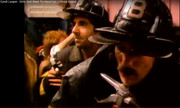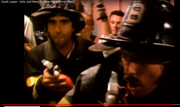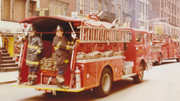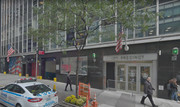You are using an out of date browser. It may not display this or other websites correctly.
You should upgrade or use an alternative browser.
You should upgrade or use an alternative browser.
FDNY and NYC Firehouses and Fire Companies - 2nd Section
- Thread starter mack
- Start date
Engine 8/Ladder 2/Battalion 8 Firehouse 165 E 51st Street Midtown East, Manhattan 3rd Division, 8th Battalion ?Midtown Highrise?
Engine 8 organized 128 E 50th Street former firehouse Relief Hose 51 1865
Engine 8 new firehouse 165 E 51st Street 1869
Engine 8 moved 126 E 50th Street at Ladder 2 1944
Engine 8 returned 165 E 51st Street w/Ladder 2 1945
Engine 8 moved 157 E 67th Street at Engine 39 1957
Engine 8 moved 213 E 50th Street w/Ladder 2 1960
Engine 8 new firehouse 165 E 51st Street w/ Ladder 2 1961
Engine 8 moved 157 E 67th Street at Engine 39 2006
Engine 8 returned 165 E 51 Street w/Ladder 2 2006
Ladder 2 organized 126 E 50th St former firehouse Liberty Hook and Ladder 16 1865
Ladder 2 moved 129 E 52nd Street 1912
Ladder 2 moved 165 E 51st Street at Engine 8 1912
Ladder 2 moved 159 E 67th Street former firehouse Ladder 16 1912
Ladder 2 new firehouse 126 E 50th Street 1913
Ladder 2 moved 165 E 51st Street w/ Engine 8 1945
Ladder 2 moved 238 E 40th Street at Engine 21 1957
Ladder 2 moved 213 E 50th Street at Engine 8 1960
Ladder 2 new firehouse 165 E 51st Street w/Engine 8 1961
Ladder 2 moved 238 E 40th Street at Engine 21 2005
Ladder 2 returned 165 E 51st Street w/Engine 8 2006
Ladder 2-2 organized 126 E 50th Street at Ladder 2 1913
Ladder 2-2 disbanded 1939
Battalion 8 organized 160 E 33rd Street ?Alone? 1869
Battalion 8 moved 217 E 28th Street at Ladder 7 1877
Battalion 8 moved 160 E 33rd Street ?Alone? 1900
Battalion 8 moved 248 W 48th Street former firehouse Battalion 9 1903
Battalion 8 moved 160 E 33rd Street ?Alone? 1904
Battalion 8 moved 126 E 50th Street at Ladder 2 1909
Battalion 8 moved 129 E 52nd Street w/Ladder 2 1912
Battalion 8 new firehouse w/Ladder 16 126 E 50th Street w/Ladder 16 1912
Battalion 8 moved 165 E 51st Street w/Engine 8 1945
Battalion 8 moved 33 W 43rd Street at Engine 65 1957
Battalion 8 moved 213 E 50th Street w/Engine 8 1960
Battalion 8 new firehouse 165 E 51st Street w/Engine 8 1961
Battalion 8 moved 157 E 67th Street at Engine 39 2005
Battalion 8 returned 165 E 51st Street w/Engine 8 2006
Assistant Chief of Department 1961
Pre-FDNY volunteer companies:
Engine 8 organized in Relief Hose No 51 former firehouse in 1865:
"Relief Hose No 51 - Foreman, Stephen L. McCoy. Located 106 East Fiftieth street; performs duty in the first and second districts. House in ordinary condition; have applied for a new house; petition granted; carriage in good condition; built in 18?4, by Charles E. Hartsborn; present number of men, 23; 700 feet of hose, in bad condition, and 300 feet good ; hose tender, in good condition.? - from Hose Companies of New York City 41-61 1865 Valentine's Manual of the City of New York 1865
Ladder 2 organized in Liberty Hook and Ladder 16 former firehouse in 1865:

Engine 8 original roster ? 1865:
Foreman John Van Tassell; Asst Foreman William Frost; Engineer Hiram S. Williams; Stoker George Jarvis; Driver Albert Homer; Fireman John Pye; Fireman John H. Grooves; Fireman Thomas Harrison; Fireman Charles H. Smith; Fireman John I. Egan; Fireman George W. Bell
Ladder 2 original roster - 1865:
Foreman Andrew J. Brady; Asst Foreman John Rourke; Driver Ernest Keyser; Fireman Henry Holdsworth; Fireman Edward Story; Fireman Robert Amos; Fireman Roger B. Hamblett; Fireman Edward S. Smith; Fireman Minthorne B. Tompkins; Fireman Thomas Hutchingson; Fireman Samuel Hunt; Fireman Philip Ramee
Engine 8 - 165 E 51st Street firehouse - built 1852:
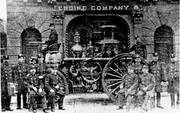
Ladder 2 - 126 E 50th Street firehouse - built 1861:
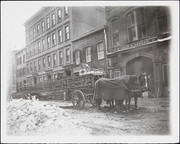
Engine 8 - 165 E 51st Street firehouse - built 1869:

Engine 8 located next to NYPD 17th Precinct
Ladder 2 - 126 E 50th Street firehouse - built 1913:
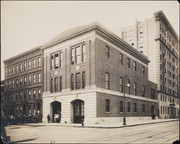
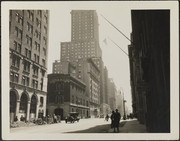
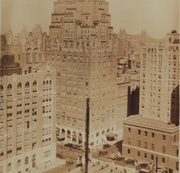
Engine 8/Ladder 2 - 165 E 51st Street firehouse - built 1961:
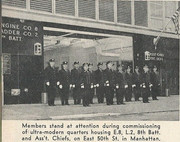
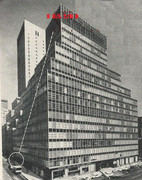
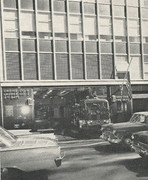
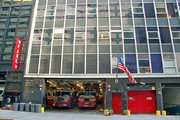


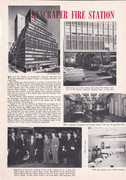
Engine 8:


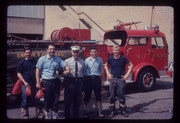
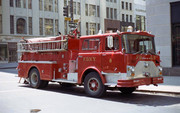

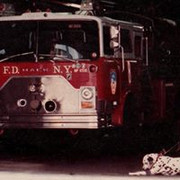
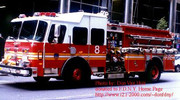
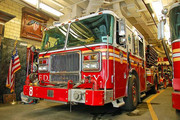
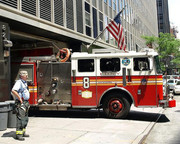
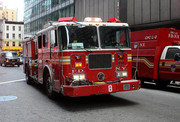
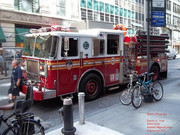
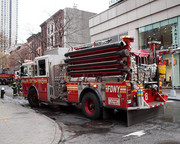
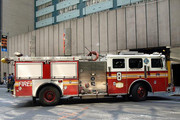
Ladder 2:

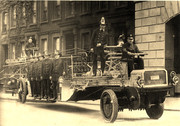
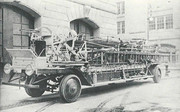
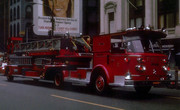
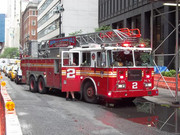
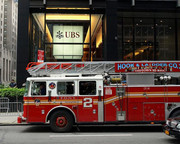
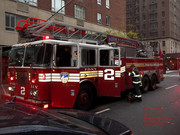
Engine 8/Ladder 2:
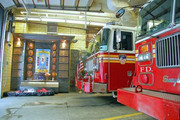


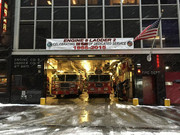
Battalion 8:
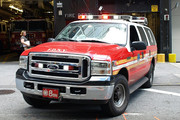
Engine 8/Ladder 2/Battalion 8:
https://www.youtube.com/watch?v=F9Hm5GFZzYw
https://www.youtube.com/watch?v=Ukvufk3s8yg
https://www.youtube.com/watch?v=sGPA7qAtttc
https://www.youtube.com/watch?v=_8Tvm40WxVQ
Engine 8/Ladder 2/Battalion 8 members:
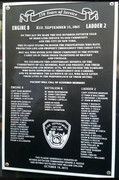
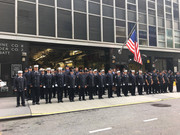
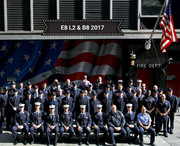
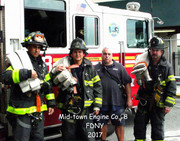
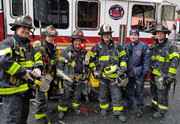
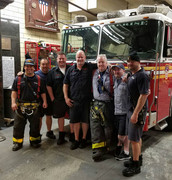
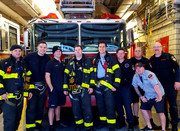
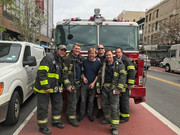
Engine 8/Ladder 2 FDNY Medals:
JAMES LEVINS FF. LAD. 2 OCT. 9, 1880 JAMES GORDON BENNETT
FF Levins responded to a fire with Ladder 2 on October 9, 1880, at 99 Park Avenue. FF Levins climbed to the roof and jumped 12 feet to rescue an unconscious woman, Bridget Murray, who was trapped on the top floor.
JAMES MONAGHAN FF. LAD. 2 JAN. 2, 1900 TREVOR-WARREN
THOMAS F. FREEL CAPT. ENG. 8 1901 STEPHENSON
WILLIAM B SYTHES FF. LAD. 2 APR. 17, 1908 STRONG
JOHN B. HOWE BATT. CHIEF BAT. 8 MAY 10, 1908 DEPARTMENT
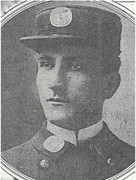
?On May 10, 1908, he responded to a fire at 214 East 65th St. While companies were attacking the fire, two men became visible through the smoke trapped at a fourth-floor window. A ladder was quickly raised, but proved too short. Seeing one of the men climb out and dangle from the windowsill, Howe sprang into action. He dashed to the top rung of a ladder, grabbed the man by the legs and lifted him above his head, then lowered him down to firemen on the ladder below him. Still on the topmost rung, he repeated this feat of strength and balance with the second man. For his actions Howe was awarded a department medal.? ? Firehouse
http://www.firehouse.com/article/11213191/rekindles-hall-of-flame
JAMES SHERLOCK CAPT. LAD. 2 JAN. 6, 1916 CRIMMINS
JAMES J. WALSH FF. LAD. 2 APR. 9, 1920 CRIMMINS
RICHARD RYNN FF. LAD. 2 NOV. 16, 1925 TREVOR-WARREN
WILLIAM M. FEELY FF. LAD. 2 MAR. 13, 1934 CRIMMINS
JOHN CORCORAN FF. LAD. 2 JAN. 24, 1936 HUGH BONNER
JOHN COLGAN FF. LAD. 2 APR. 17, 1942 JAMES GORDON BENNETT
WALTER J. MANN FF. LAD. 2 DEC. 21, 1945 TODD
JAMES P. REILLY FF. LAD. 2 DEC. 21, 1945 PRENTICE
JAMES P. POWDERLY FF. LAD. 2 FEB. 16, 1945 MC ELLIGOTT
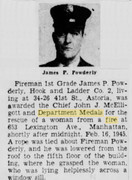
WILLIAM H. CARNEY FF. LAD. 2 JAN. 15, 1948 FDR
BERNARD J. CANNON LT. ENG. 8 MAR. 6, 1949 MC ELLIGOTT
ROBERT A. WEINER FF. LAD. 2 DEC. 25, 1951 KENNY
CHARLES J. BOLL FF. LAD. 2 JAN. 9, 1953 BROOKMAN
LODD May 20, 1959
WALTER J. MANN FF. LAD. 2 APR. 8, 1954 DOUGHERTY
CHARLES J. BOLL FF. LAD. 2 APR. 8, 1954 DELEHANTY
LODD May 20, 1959
GILBERT W. O'NEILL FF. LAD. 2 AUG. 29, 1955 JOHNSTON
LAWRENCE J. SCHMEELK FF. LAD. 2 DEC. 13, 1955 DELEHANTY
MALACHY COX FF. LAD. 2 AUG. 29, 1955 CONRAN
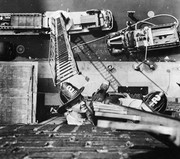
?Malachy Cox, left, and Gilbert O?Neill rescued Eugenie Ward of Chicago from her burning room at the Madison Hotel on 58th Street. While the two men were making their dramatic rescue, Otto H. Knocenhauer, deputy fire chief in command of the Fire Department?s Third Division, was overcome by smoke in a vain attempt to reach Mrs. Ward?s locked room.? ? ?History by Hashegan?
RONALD P. KERLEY FF. LAD. 2 JUL. 21, 1963 DELEHANTY
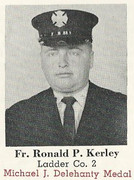
FRED WEIS FF. LAD. 2 AUG. 29, 1963 PULASKI
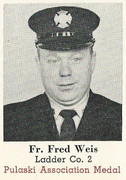
JOHN T. MC ELLIGOTT LT. ENG. 8 NOV. 10, 1966 MC ELLIGOTT
ALBERT SOTO FF. LAD. 2 DEC. 4, 1970 KRIDEL
DANIEL A. NASTRO LT. LAD. 2 DEC. 4, 1970 WAGNER
MAX SIEGEL FF. LAD. 2 DEC. 4, 1970 KANE
DENNIS J. ANDERSON FF. LAD. 2 AUG. 30, 1984 PULASKI

RAYMOND J. HINE FF. LAD. 2 OCT. 29, 1984 PRENTICE
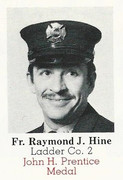
JOSEPH C. CAVANAGH FF. LAD. 2 AUG. 8, 1995 COMPANY OFFICERS
EUGENE W. MAGUIRE FF. LAD. 2 NOV. 14, 1995 PIPES & DRUMS
WILLIAM J. KUHENS FF. LAD. 2 AUG. 8, 1995 DE FRANCO
JOHN F. LOVETT FF. LAD. 2 E-21 OCT. 27, 1996 DE FRANCO
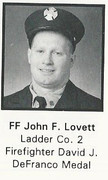
Engine 8/Ladder 2/Battalion 8 LODDs:
FIREFIGHTER GEORGE BELL ENGINE 8 NOVEMBER 8, 1865
He died as a result of inhaling gas fumes at a fire on October 29th.
FIREFIGHTER HENRY C. MOUNT ENGINE 8 DECEMBER 9, 1879
Died December 9, 1879 due to fatal injuries received in November at an 8th Avenue stables fire. His family survived by collections made by fire department supporters.
FIREFIGHTER JOHN ENNIS ENGINE 8 AUGUST 30, 1885
CAPTAIN JOHN J. GRADY LADDER 2 March 24, 1900
CAPT John J. Grady - Ladder 2
FF Peter F. Bowen - Engine 21
FF William J. Smith - Engine 21
While operating at a 3-alarm fire, they drowned when they were pitched into 8 feet of water in the cellar of the building when it collapsed. Several other F/Fs were injured when they fell into the water while trying to rescue the trapped men.

FIREFIGHTER JOHN GEARY LADDER 2 February 21, 1901
Killed in collision with streetcar when responding.

BATTALION CHIEF WILLIAM J. DUFFY BATTALION 8 May 5, 1913
FIREFIGHTER CHARLES B. FRANSSEN ENGINE 8 May 24, 1919

FIREFIGHTER JOHN J. DONOHUE LADDER 2 April 3, 1928
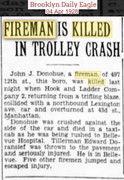
Killed in collision with trolley returning from fire.
LIEUTENANT CHRISTOPHER J. PLUNKETT ENGINE 8 September 3, 1938
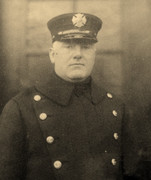
He died as a result of injuries sustained on August 31st, when he fell down an elevator shaft while working at a single-alarm fire.
FIREFIGHTER JAMES P. REILLY LADDER 2 November 14, 1956
FIREFIGHTER CHARLES J. BOLL LADDER 2 May 20, 1959
FIREFIGHTER ROBERT PARRO ENGINE 8 September 11, 2001
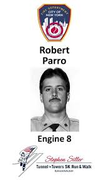
http://www.legacy.com/sept11/story.aspx?personid=151798
FIREFIGHTER MICHAEL CLARKE LADDER 2 September 11, 2001
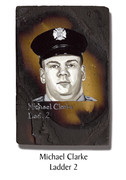
http://www.silive.com/september-11/index.ssf/2010/09/michael_clarke_27_firefighter.html
FIREFIGHTER GEORGE DIPASQUALE LADDER 2 September 11, 2001

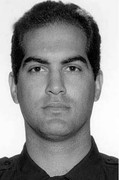
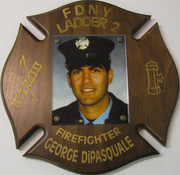
http://www.silive.com/september-11/index.ssf/2010/09/george_dipasquale_33_fireman_n.html
FIREFIGHTER DENIS GERMAIN LADDER 2 September 11, 2001
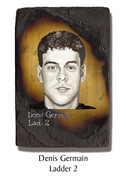
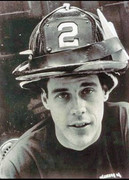
http://www.legacy.com/Sept11/Story.aspx?PersonID=146296&location=2
FIREFIGHTER DANIEL HARLIN LADDER 2 September 11, 2001

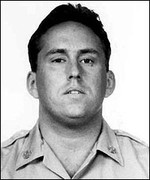
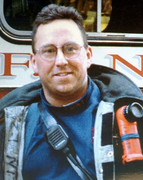
http://www.legacy.com/sept11/butlereagle/Story.aspx?PersonID=146352&location=2
CAPTAIN FREDERICK ILL LADDER 2 September 11, 2001
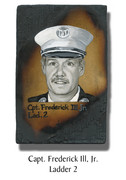
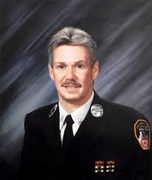
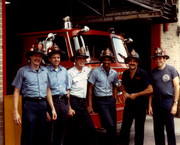
http://www.legacy.com/obituaries/lohud/obituary.aspx?pid=148866427
FIREFIGHTER CARL MOLINARO LADDER 2 September 11, 2001
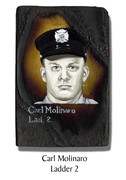
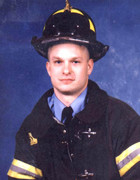
http://www.silive.com/september-11/index.ssf/2010/09/carl_molinaro_32_firefighter_f.html
http://www.legacy.com/sept11/story.aspx?personid=146369
FIREFIGHTER DENNIS MULLIGAN LADDER 2 September 11, 2001
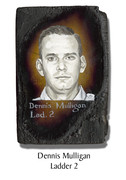
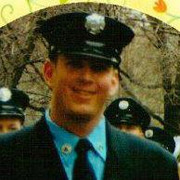

http://www.legacy.com/sept11/story.aspx?personid=147174
FIREFIGHTER THOMAS MCCANN BATTALION 8 September 11, 2001
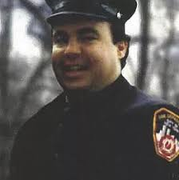
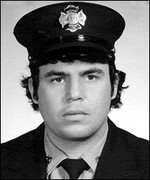
http://www.is125q.org/thomas-j-mccann-remembered.html
BATTALION CHIEF THOMAS DEANGELIS BATTALION 8 September 11, 2001
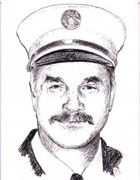
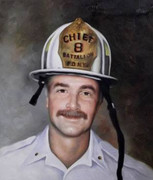
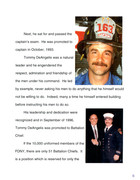
http://www.legacy.com/sept11/humble/story.aspx?personid=127872
http://livingmemorial.voicesofseptember11.org/nytpog/37975
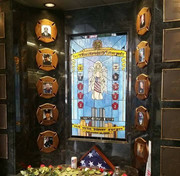
RIP. Never forget.
Midtown East:


http://nymag.com/realestate/articles/neighborhoods/midtowneast.htm
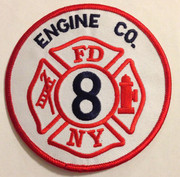
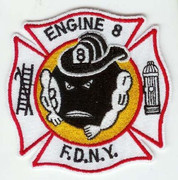
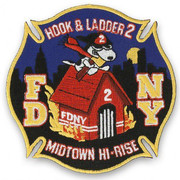
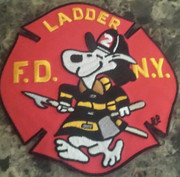
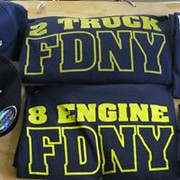
Engine 8 organized 128 E 50th Street former firehouse Relief Hose 51 1865
Engine 8 new firehouse 165 E 51st Street 1869
Engine 8 moved 126 E 50th Street at Ladder 2 1944
Engine 8 returned 165 E 51st Street w/Ladder 2 1945
Engine 8 moved 157 E 67th Street at Engine 39 1957
Engine 8 moved 213 E 50th Street w/Ladder 2 1960
Engine 8 new firehouse 165 E 51st Street w/ Ladder 2 1961
Engine 8 moved 157 E 67th Street at Engine 39 2006
Engine 8 returned 165 E 51 Street w/Ladder 2 2006
Ladder 2 organized 126 E 50th St former firehouse Liberty Hook and Ladder 16 1865
Ladder 2 moved 129 E 52nd Street 1912
Ladder 2 moved 165 E 51st Street at Engine 8 1912
Ladder 2 moved 159 E 67th Street former firehouse Ladder 16 1912
Ladder 2 new firehouse 126 E 50th Street 1913
Ladder 2 moved 165 E 51st Street w/ Engine 8 1945
Ladder 2 moved 238 E 40th Street at Engine 21 1957
Ladder 2 moved 213 E 50th Street at Engine 8 1960
Ladder 2 new firehouse 165 E 51st Street w/Engine 8 1961
Ladder 2 moved 238 E 40th Street at Engine 21 2005
Ladder 2 returned 165 E 51st Street w/Engine 8 2006
Ladder 2-2 organized 126 E 50th Street at Ladder 2 1913
Ladder 2-2 disbanded 1939
Battalion 8 organized 160 E 33rd Street ?Alone? 1869
Battalion 8 moved 217 E 28th Street at Ladder 7 1877
Battalion 8 moved 160 E 33rd Street ?Alone? 1900
Battalion 8 moved 248 W 48th Street former firehouse Battalion 9 1903
Battalion 8 moved 160 E 33rd Street ?Alone? 1904
Battalion 8 moved 126 E 50th Street at Ladder 2 1909
Battalion 8 moved 129 E 52nd Street w/Ladder 2 1912
Battalion 8 new firehouse w/Ladder 16 126 E 50th Street w/Ladder 16 1912
Battalion 8 moved 165 E 51st Street w/Engine 8 1945
Battalion 8 moved 33 W 43rd Street at Engine 65 1957
Battalion 8 moved 213 E 50th Street w/Engine 8 1960
Battalion 8 new firehouse 165 E 51st Street w/Engine 8 1961
Battalion 8 moved 157 E 67th Street at Engine 39 2005
Battalion 8 returned 165 E 51st Street w/Engine 8 2006
Assistant Chief of Department 1961
Pre-FDNY volunteer companies:
Engine 8 organized in Relief Hose No 51 former firehouse in 1865:
"Relief Hose No 51 - Foreman, Stephen L. McCoy. Located 106 East Fiftieth street; performs duty in the first and second districts. House in ordinary condition; have applied for a new house; petition granted; carriage in good condition; built in 18?4, by Charles E. Hartsborn; present number of men, 23; 700 feet of hose, in bad condition, and 300 feet good ; hose tender, in good condition.? - from Hose Companies of New York City 41-61 1865 Valentine's Manual of the City of New York 1865
Ladder 2 organized in Liberty Hook and Ladder 16 former firehouse in 1865:

Engine 8 original roster ? 1865:
Foreman John Van Tassell; Asst Foreman William Frost; Engineer Hiram S. Williams; Stoker George Jarvis; Driver Albert Homer; Fireman John Pye; Fireman John H. Grooves; Fireman Thomas Harrison; Fireman Charles H. Smith; Fireman John I. Egan; Fireman George W. Bell
Ladder 2 original roster - 1865:
Foreman Andrew J. Brady; Asst Foreman John Rourke; Driver Ernest Keyser; Fireman Henry Holdsworth; Fireman Edward Story; Fireman Robert Amos; Fireman Roger B. Hamblett; Fireman Edward S. Smith; Fireman Minthorne B. Tompkins; Fireman Thomas Hutchingson; Fireman Samuel Hunt; Fireman Philip Ramee
Engine 8 - 165 E 51st Street firehouse - built 1852:

Ladder 2 - 126 E 50th Street firehouse - built 1861:

Engine 8 - 165 E 51st Street firehouse - built 1869:

Engine 8 located next to NYPD 17th Precinct
Ladder 2 - 126 E 50th Street firehouse - built 1913:



Engine 8/Ladder 2 - 165 E 51st Street firehouse - built 1961:







Engine 8:













Ladder 2:







Engine 8/Ladder 2:




Battalion 8:

Engine 8/Ladder 2/Battalion 8:
https://www.youtube.com/watch?v=F9Hm5GFZzYw
https://www.youtube.com/watch?v=Ukvufk3s8yg
https://www.youtube.com/watch?v=sGPA7qAtttc
https://www.youtube.com/watch?v=_8Tvm40WxVQ
Engine 8/Ladder 2/Battalion 8 members:








Engine 8/Ladder 2 FDNY Medals:
JAMES LEVINS FF. LAD. 2 OCT. 9, 1880 JAMES GORDON BENNETT
FF Levins responded to a fire with Ladder 2 on October 9, 1880, at 99 Park Avenue. FF Levins climbed to the roof and jumped 12 feet to rescue an unconscious woman, Bridget Murray, who was trapped on the top floor.
JAMES MONAGHAN FF. LAD. 2 JAN. 2, 1900 TREVOR-WARREN
THOMAS F. FREEL CAPT. ENG. 8 1901 STEPHENSON
WILLIAM B SYTHES FF. LAD. 2 APR. 17, 1908 STRONG
JOHN B. HOWE BATT. CHIEF BAT. 8 MAY 10, 1908 DEPARTMENT

?On May 10, 1908, he responded to a fire at 214 East 65th St. While companies were attacking the fire, two men became visible through the smoke trapped at a fourth-floor window. A ladder was quickly raised, but proved too short. Seeing one of the men climb out and dangle from the windowsill, Howe sprang into action. He dashed to the top rung of a ladder, grabbed the man by the legs and lifted him above his head, then lowered him down to firemen on the ladder below him. Still on the topmost rung, he repeated this feat of strength and balance with the second man. For his actions Howe was awarded a department medal.? ? Firehouse
http://www.firehouse.com/article/11213191/rekindles-hall-of-flame
JAMES SHERLOCK CAPT. LAD. 2 JAN. 6, 1916 CRIMMINS
JAMES J. WALSH FF. LAD. 2 APR. 9, 1920 CRIMMINS
RICHARD RYNN FF. LAD. 2 NOV. 16, 1925 TREVOR-WARREN
WILLIAM M. FEELY FF. LAD. 2 MAR. 13, 1934 CRIMMINS
JOHN CORCORAN FF. LAD. 2 JAN. 24, 1936 HUGH BONNER
JOHN COLGAN FF. LAD. 2 APR. 17, 1942 JAMES GORDON BENNETT
WALTER J. MANN FF. LAD. 2 DEC. 21, 1945 TODD
JAMES P. REILLY FF. LAD. 2 DEC. 21, 1945 PRENTICE
JAMES P. POWDERLY FF. LAD. 2 FEB. 16, 1945 MC ELLIGOTT

WILLIAM H. CARNEY FF. LAD. 2 JAN. 15, 1948 FDR
BERNARD J. CANNON LT. ENG. 8 MAR. 6, 1949 MC ELLIGOTT
ROBERT A. WEINER FF. LAD. 2 DEC. 25, 1951 KENNY
CHARLES J. BOLL FF. LAD. 2 JAN. 9, 1953 BROOKMAN
LODD May 20, 1959
WALTER J. MANN FF. LAD. 2 APR. 8, 1954 DOUGHERTY
CHARLES J. BOLL FF. LAD. 2 APR. 8, 1954 DELEHANTY
LODD May 20, 1959
GILBERT W. O'NEILL FF. LAD. 2 AUG. 29, 1955 JOHNSTON
LAWRENCE J. SCHMEELK FF. LAD. 2 DEC. 13, 1955 DELEHANTY
MALACHY COX FF. LAD. 2 AUG. 29, 1955 CONRAN

?Malachy Cox, left, and Gilbert O?Neill rescued Eugenie Ward of Chicago from her burning room at the Madison Hotel on 58th Street. While the two men were making their dramatic rescue, Otto H. Knocenhauer, deputy fire chief in command of the Fire Department?s Third Division, was overcome by smoke in a vain attempt to reach Mrs. Ward?s locked room.? ? ?History by Hashegan?
RONALD P. KERLEY FF. LAD. 2 JUL. 21, 1963 DELEHANTY

FRED WEIS FF. LAD. 2 AUG. 29, 1963 PULASKI

JOHN T. MC ELLIGOTT LT. ENG. 8 NOV. 10, 1966 MC ELLIGOTT
ALBERT SOTO FF. LAD. 2 DEC. 4, 1970 KRIDEL
DANIEL A. NASTRO LT. LAD. 2 DEC. 4, 1970 WAGNER
MAX SIEGEL FF. LAD. 2 DEC. 4, 1970 KANE
DENNIS J. ANDERSON FF. LAD. 2 AUG. 30, 1984 PULASKI

RAYMOND J. HINE FF. LAD. 2 OCT. 29, 1984 PRENTICE

JOSEPH C. CAVANAGH FF. LAD. 2 AUG. 8, 1995 COMPANY OFFICERS
EUGENE W. MAGUIRE FF. LAD. 2 NOV. 14, 1995 PIPES & DRUMS
WILLIAM J. KUHENS FF. LAD. 2 AUG. 8, 1995 DE FRANCO
JOHN F. LOVETT FF. LAD. 2 E-21 OCT. 27, 1996 DE FRANCO

Engine 8/Ladder 2/Battalion 8 LODDs:
FIREFIGHTER GEORGE BELL ENGINE 8 NOVEMBER 8, 1865
He died as a result of inhaling gas fumes at a fire on October 29th.
FIREFIGHTER HENRY C. MOUNT ENGINE 8 DECEMBER 9, 1879
Died December 9, 1879 due to fatal injuries received in November at an 8th Avenue stables fire. His family survived by collections made by fire department supporters.
FIREFIGHTER JOHN ENNIS ENGINE 8 AUGUST 30, 1885
CAPTAIN JOHN J. GRADY LADDER 2 March 24, 1900
CAPT John J. Grady - Ladder 2
FF Peter F. Bowen - Engine 21
FF William J. Smith - Engine 21
While operating at a 3-alarm fire, they drowned when they were pitched into 8 feet of water in the cellar of the building when it collapsed. Several other F/Fs were injured when they fell into the water while trying to rescue the trapped men.

FIREFIGHTER JOHN GEARY LADDER 2 February 21, 1901
Killed in collision with streetcar when responding.

BATTALION CHIEF WILLIAM J. DUFFY BATTALION 8 May 5, 1913
FIREFIGHTER CHARLES B. FRANSSEN ENGINE 8 May 24, 1919

FIREFIGHTER JOHN J. DONOHUE LADDER 2 April 3, 1928

Killed in collision with trolley returning from fire.
LIEUTENANT CHRISTOPHER J. PLUNKETT ENGINE 8 September 3, 1938

He died as a result of injuries sustained on August 31st, when he fell down an elevator shaft while working at a single-alarm fire.
FIREFIGHTER JAMES P. REILLY LADDER 2 November 14, 1956
FIREFIGHTER CHARLES J. BOLL LADDER 2 May 20, 1959
FIREFIGHTER ROBERT PARRO ENGINE 8 September 11, 2001

http://www.legacy.com/sept11/story.aspx?personid=151798
FIREFIGHTER MICHAEL CLARKE LADDER 2 September 11, 2001

http://www.silive.com/september-11/index.ssf/2010/09/michael_clarke_27_firefighter.html
FIREFIGHTER GEORGE DIPASQUALE LADDER 2 September 11, 2001



http://www.silive.com/september-11/index.ssf/2010/09/george_dipasquale_33_fireman_n.html
FIREFIGHTER DENIS GERMAIN LADDER 2 September 11, 2001


http://www.legacy.com/Sept11/Story.aspx?PersonID=146296&location=2
FIREFIGHTER DANIEL HARLIN LADDER 2 September 11, 2001



http://www.legacy.com/sept11/butlereagle/Story.aspx?PersonID=146352&location=2
CAPTAIN FREDERICK ILL LADDER 2 September 11, 2001



http://www.legacy.com/obituaries/lohud/obituary.aspx?pid=148866427
FIREFIGHTER CARL MOLINARO LADDER 2 September 11, 2001


http://www.silive.com/september-11/index.ssf/2010/09/carl_molinaro_32_firefighter_f.html
http://www.legacy.com/sept11/story.aspx?personid=146369
FIREFIGHTER DENNIS MULLIGAN LADDER 2 September 11, 2001



http://www.legacy.com/sept11/story.aspx?personid=147174
FIREFIGHTER THOMAS MCCANN BATTALION 8 September 11, 2001


http://www.is125q.org/thomas-j-mccann-remembered.html
BATTALION CHIEF THOMAS DEANGELIS BATTALION 8 September 11, 2001



http://www.legacy.com/sept11/humble/story.aspx?personid=127872
http://livingmemorial.voicesofseptember11.org/nytpog/37975

RIP. Never forget.
Midtown East:


http://nymag.com/realestate/articles/neighborhoods/midtowneast.htm





- Joined
- Aug 29, 2008
- Messages
- 2,487
Possibly E.M.?68jk09 said:This Rig was the Pride & Joy & meticulously worked on & maintained in showroom condition by a well known Chauffer back then who is also the Father of a frequent Poster on here... https://postimg.cc/image/b0ht7vc45/
Great house with great companies of men. I used to hang out there when I worked for First National City Bank (now Citibank) at 399 Park Avenue between 53rd and 54th. A friend, Walter Wagner, transferred to L 2 from L 147 in Flatbush and I would visit him.
1910: Mike, the Extraordinary Trolley-Riding Fire Dog of Engine Company 8
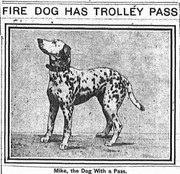
Mike was the fire dog of Engine Company 8 from 1908 to 1914. Twice, he won the blue ribbon in the Dalmatian class at the Westminster Kennel Club Dog Show at Madison Square Garden. Mike was no ordinary fire dog. In fact, he was no ordinary Dalmatian. As the son of Oakie and Bess, two of the most famous mascot dogs in the history of the Fire Department of New York, he was destined for greatness.
Oakie was raised in Newport, Rhode Island on Oakland Farm, the residence of Alfred Gwynne Vanderbilt. In March 1907, Vanderbilt shipped the dog by crate to Engine Company 39 at Fire Headquarters after he heard that their fire dog, Pinkie, was killed trying to slide down the pole at the firehouse. Oakie was placed in charge of Foreman Edward J. Levy. Mike?s father, Oakie, was raised on Oakland Farm, the country residence of Alfred Gwynne Vanderbilt in Newport, Rhode Island.
Bess also came from a litter of aristocratic dogs, but her master is not known. As the story goes, he very much admired the work of the firemen who responded to a fire at his house, so he decided to give them a Dalmatian.
One day he drove up to the firehouse of Engine Company No. 8 in his touring car and gave them a puppy. He didn?t say who he was, but told them that the dog?s name was Bess and that he wanted her to be a real dog working with firemen.
Alfred Gwynne Vanderbilt, Sr. was the third son of Cornelius Vanderbilt II and Alice Claypoole Gwynne. He was among the 1,198 passengers who died on the RMS Lusitania when it was torpedoed by a German U-boat on May 7, 1915, off the coast of Ireland. He was called a hero for helping others into lifeboats ? he even offered his own life jacket to a woman with an infant even though he couldn?t swim. Vanderbilt?s body was never recovered.
Boisterous, beefy Michael Creegman, aka, Mickey the Breeze, clicked with little pup right off the bat, and took her uptown every night for dinner. Perhaps he had connections, or perhaps it was his dominating presence, but somehow Mickey got her a special pass to ride the Third Avenue Railroad trolley cars with him.
In March 1908, Bess gave birth to several noble pups. From the litter, a puppy the firemen named Mike was selected and turned over to driver David M. Lynx of Engine Company 8. Shortly after Mike starting training for the position of fire dog with Engine Company 8, Bess was transferred to a quieter station house in Queens to recover from injuries sustained from running into burning buildings.
Since she would no longer need her surface rail pass, Fireman David Lynx escorted Mike to the office of Receiver Frederick Wallington Whitridge to see if it could be transferred to Bess? son.
Metropolitan Steam Engine Company No. 8 was organized on September 11, 1865. The company spent the first four years at 128 E. 50th Street, and then moved to its current location at 165 East 51st Street in 1869. Today the company shares headquarters with Ladder Company 2 and Battalion 8.
Now, Mike was not one for acknowledging anyone not wearing a fireman?s uniform. But according to David Lynx, he jumped right up on Whitridge?s lap ?just like a politician asking for a favor.? Whitridge gave the fireman permission to transfer the pass to Mike, saying, ?It?s the only pass of the kind ever issued by the road, and if Mike is willing to take all the risks and not sue the company in case of accident I guess we?ll transfer the pass to him.?
Frederick Whitridge of 16 East 11th Street was appointed Receiver of the Third Avenue Railroad on January 6, 1908, following its foreclosure under the collapse of the Metropolitan Street Railway, which then controlled the rail company. In 1910, the Third Avenue Railway was chartered, acquiring all the properties of the former Third Avenue Railroad. Whitridge was named president of the new company around 1915.
The special pass was engraved on a silver plate attached to his collar, which also held a tiny brass fire helmet. The inscription read: ?To conductors: permission is hereby granted to carry a fire dog on the cars of this company.
All the conductors were instructed to honor this pass, which let him ride back and forth on the front platform of all the Third Avenue lines. Mike used the pass often to go home with the firemen for dinner and to visit his fire dog pals in uptown fire houses.
The Third Avenue Railroad Company formed in 1852 and began operating its horse-drawn cars on July 3, 1853. By 1859, using the 125th Street Railroad and tracks along 10th Avenue (Amsterdam Avenue), the line ran from the Astor House (Broadway and Park Row) north along Park Row, the Bowery, and Third Avenue to 130th Street near the Harlem River, a distance of about 8 miles.
One of Mike?s best canine friends was Jerry, an ordinary mongrel attached to what was then the 29th Precinct at 163 E. 51st Street. Jerry was brought to the police station on March 4, 1909, by a woman who had found him outside starving and shivering. Captain John J. Lantry accepted the dog and the men named him Jerry in honor of the station?s doorman (they were originally going to call him Bill Taft in honor of President William Taft?s inauguration that year but the vote went to Jerry).
One of the dogs? favorite activity was taking the ferry-boat from East 53rd Street to Blackwell?s Island. If it was a warm day, they?d go swimming to cool off. Sometimes they would stay there for two or three days, but they always returned to their respective stations.
By the mid-1880s, the Third Avenue Railroad Company began operating cable cars on the Tenth Avenue cable line and 125th Street line. The surface railway used cable cars as well as horse-drawn streetcars until 1899 when the company switched over to electric-powered trolleys.
When it came to the job, though, Mike and Jerry were all business. Jerry would accompany the policeman on patrol or ride along with the patrol wagon that picked up the prisoners for night court, and Mike would ride along with the fire engines. The two never switched jobs or mixed pleasure with business.
Mike did his job very well, and the firemen say he saved many lives. He?d jump up and down in excitement as the horses, Jerry, Pat, and Miguel got into their harnesses, and would run ahead to bark and snap at pedestrians in cross streets to let them know the horses were coming. On the scene of the fire, Mike would always run into the buildings with the firemen, just like he mother once did. His reward on hot nights was getting hosed down with the horses when their work was done.
Mike?s friend Jerry was attached to the 29th Precinct ? originally the 19th ? which was established at 163 East 51st Street on September 7, 1877. Today it?s known as the 17th Precinct.
Mike?s two other good four-legged friends at the firehouse were a big grey horse named Jerry who also arrived in 1908 and a large black cat named Tom. The three animals loved being together, and always slept in Jerry?s stall ? Mike would put his head on Jerry?s neck and Tom would sleep on Jerry?s back. Jerry fussed over his small friends in the stall, and would always lie down carefully so as not to crush them.
When an alarm came in at night, Tom would jump out of the way and walk to the street to watch the engines pull away. Then he?d go back inside to sleep until his friends came home (who said cats were not as smart as dogs?) Actually, one time Tom tried to ride on Jerry?s back as he raced to a fire. He held on for a few seconds and then jumped, landing on his end and injuring himself (so maybe he wasn?t that smart).
Although Mike usually went inside the buildings with the men, he must have sensed that his friend Jerry was about to lose his job when he noticed the horse was falling asleep on the scene. According to Captain Joseph Donovan, no sooner would Dave Lynx place a blanket over his team, Jerry would drop down in the gutter and take a nap.
Dave and the engine men Dennis McNamara and Frank Leonard didn?t know what to do ? but Mike had an idea.
For the next few nights, Mike remained outside with the horses and began nipping Jerry on the knees as soon as he started to kneel down. Sometimes he?d nip him 10 times in a half hour, but eventually the trick worked and Jerry stopped falling asleep on the job.
On December 5, 1914, Jerry stumbled and fell while racing to a fire. The large horse landed on top of Mike, crushing his hind legs. The firemen carried Mike back to the station and placed him in Jerry?s stall to quiet the horse ? she seemed to know that the end was near for her dear canine friend.
Although Mike had a short life, it was a very rewarding one. Not only did he help save lives, he also took first place in the Dalmatian class at the 34th annual Westminster Kennel Club show at Madison Square Garden in 1910 and 1911. The class was specifically dedicated to firemen?s dogs. In 1910, second place went to two-year-old Smoke II of Engine Company 68 on Jay Street in Brooklyn.
This story is dedicated to the families and friends of the firefighters from Engine 8, Ladder 2, and Battalion 8 who made the supreme sacrifice on September 11th, 2001.
http://hatchingcatnyc.com/2015/02/21/mike-trolley-riding-fire-dog-engine-8/
Engine 8 firehouse/17th Precinct:


Mike was the fire dog of Engine Company 8 from 1908 to 1914. Twice, he won the blue ribbon in the Dalmatian class at the Westminster Kennel Club Dog Show at Madison Square Garden. Mike was no ordinary fire dog. In fact, he was no ordinary Dalmatian. As the son of Oakie and Bess, two of the most famous mascot dogs in the history of the Fire Department of New York, he was destined for greatness.
Oakie was raised in Newport, Rhode Island on Oakland Farm, the residence of Alfred Gwynne Vanderbilt. In March 1907, Vanderbilt shipped the dog by crate to Engine Company 39 at Fire Headquarters after he heard that their fire dog, Pinkie, was killed trying to slide down the pole at the firehouse. Oakie was placed in charge of Foreman Edward J. Levy. Mike?s father, Oakie, was raised on Oakland Farm, the country residence of Alfred Gwynne Vanderbilt in Newport, Rhode Island.
Bess also came from a litter of aristocratic dogs, but her master is not known. As the story goes, he very much admired the work of the firemen who responded to a fire at his house, so he decided to give them a Dalmatian.
One day he drove up to the firehouse of Engine Company No. 8 in his touring car and gave them a puppy. He didn?t say who he was, but told them that the dog?s name was Bess and that he wanted her to be a real dog working with firemen.
Alfred Gwynne Vanderbilt, Sr. was the third son of Cornelius Vanderbilt II and Alice Claypoole Gwynne. He was among the 1,198 passengers who died on the RMS Lusitania when it was torpedoed by a German U-boat on May 7, 1915, off the coast of Ireland. He was called a hero for helping others into lifeboats ? he even offered his own life jacket to a woman with an infant even though he couldn?t swim. Vanderbilt?s body was never recovered.
Boisterous, beefy Michael Creegman, aka, Mickey the Breeze, clicked with little pup right off the bat, and took her uptown every night for dinner. Perhaps he had connections, or perhaps it was his dominating presence, but somehow Mickey got her a special pass to ride the Third Avenue Railroad trolley cars with him.
In March 1908, Bess gave birth to several noble pups. From the litter, a puppy the firemen named Mike was selected and turned over to driver David M. Lynx of Engine Company 8. Shortly after Mike starting training for the position of fire dog with Engine Company 8, Bess was transferred to a quieter station house in Queens to recover from injuries sustained from running into burning buildings.
Since she would no longer need her surface rail pass, Fireman David Lynx escorted Mike to the office of Receiver Frederick Wallington Whitridge to see if it could be transferred to Bess? son.
Metropolitan Steam Engine Company No. 8 was organized on September 11, 1865. The company spent the first four years at 128 E. 50th Street, and then moved to its current location at 165 East 51st Street in 1869. Today the company shares headquarters with Ladder Company 2 and Battalion 8.
Now, Mike was not one for acknowledging anyone not wearing a fireman?s uniform. But according to David Lynx, he jumped right up on Whitridge?s lap ?just like a politician asking for a favor.? Whitridge gave the fireman permission to transfer the pass to Mike, saying, ?It?s the only pass of the kind ever issued by the road, and if Mike is willing to take all the risks and not sue the company in case of accident I guess we?ll transfer the pass to him.?
Frederick Whitridge of 16 East 11th Street was appointed Receiver of the Third Avenue Railroad on January 6, 1908, following its foreclosure under the collapse of the Metropolitan Street Railway, which then controlled the rail company. In 1910, the Third Avenue Railway was chartered, acquiring all the properties of the former Third Avenue Railroad. Whitridge was named president of the new company around 1915.
The special pass was engraved on a silver plate attached to his collar, which also held a tiny brass fire helmet. The inscription read: ?To conductors: permission is hereby granted to carry a fire dog on the cars of this company.
All the conductors were instructed to honor this pass, which let him ride back and forth on the front platform of all the Third Avenue lines. Mike used the pass often to go home with the firemen for dinner and to visit his fire dog pals in uptown fire houses.
The Third Avenue Railroad Company formed in 1852 and began operating its horse-drawn cars on July 3, 1853. By 1859, using the 125th Street Railroad and tracks along 10th Avenue (Amsterdam Avenue), the line ran from the Astor House (Broadway and Park Row) north along Park Row, the Bowery, and Third Avenue to 130th Street near the Harlem River, a distance of about 8 miles.
One of Mike?s best canine friends was Jerry, an ordinary mongrel attached to what was then the 29th Precinct at 163 E. 51st Street. Jerry was brought to the police station on March 4, 1909, by a woman who had found him outside starving and shivering. Captain John J. Lantry accepted the dog and the men named him Jerry in honor of the station?s doorman (they were originally going to call him Bill Taft in honor of President William Taft?s inauguration that year but the vote went to Jerry).
One of the dogs? favorite activity was taking the ferry-boat from East 53rd Street to Blackwell?s Island. If it was a warm day, they?d go swimming to cool off. Sometimes they would stay there for two or three days, but they always returned to their respective stations.
By the mid-1880s, the Third Avenue Railroad Company began operating cable cars on the Tenth Avenue cable line and 125th Street line. The surface railway used cable cars as well as horse-drawn streetcars until 1899 when the company switched over to electric-powered trolleys.
When it came to the job, though, Mike and Jerry were all business. Jerry would accompany the policeman on patrol or ride along with the patrol wagon that picked up the prisoners for night court, and Mike would ride along with the fire engines. The two never switched jobs or mixed pleasure with business.
Mike did his job very well, and the firemen say he saved many lives. He?d jump up and down in excitement as the horses, Jerry, Pat, and Miguel got into their harnesses, and would run ahead to bark and snap at pedestrians in cross streets to let them know the horses were coming. On the scene of the fire, Mike would always run into the buildings with the firemen, just like he mother once did. His reward on hot nights was getting hosed down with the horses when their work was done.
Mike?s friend Jerry was attached to the 29th Precinct ? originally the 19th ? which was established at 163 East 51st Street on September 7, 1877. Today it?s known as the 17th Precinct.
Mike?s two other good four-legged friends at the firehouse were a big grey horse named Jerry who also arrived in 1908 and a large black cat named Tom. The three animals loved being together, and always slept in Jerry?s stall ? Mike would put his head on Jerry?s neck and Tom would sleep on Jerry?s back. Jerry fussed over his small friends in the stall, and would always lie down carefully so as not to crush them.
When an alarm came in at night, Tom would jump out of the way and walk to the street to watch the engines pull away. Then he?d go back inside to sleep until his friends came home (who said cats were not as smart as dogs?) Actually, one time Tom tried to ride on Jerry?s back as he raced to a fire. He held on for a few seconds and then jumped, landing on his end and injuring himself (so maybe he wasn?t that smart).
Although Mike usually went inside the buildings with the men, he must have sensed that his friend Jerry was about to lose his job when he noticed the horse was falling asleep on the scene. According to Captain Joseph Donovan, no sooner would Dave Lynx place a blanket over his team, Jerry would drop down in the gutter and take a nap.
Dave and the engine men Dennis McNamara and Frank Leonard didn?t know what to do ? but Mike had an idea.
For the next few nights, Mike remained outside with the horses and began nipping Jerry on the knees as soon as he started to kneel down. Sometimes he?d nip him 10 times in a half hour, but eventually the trick worked and Jerry stopped falling asleep on the job.
On December 5, 1914, Jerry stumbled and fell while racing to a fire. The large horse landed on top of Mike, crushing his hind legs. The firemen carried Mike back to the station and placed him in Jerry?s stall to quiet the horse ? she seemed to know that the end was near for her dear canine friend.
Although Mike had a short life, it was a very rewarding one. Not only did he help save lives, he also took first place in the Dalmatian class at the 34th annual Westminster Kennel Club show at Madison Square Garden in 1910 and 1911. The class was specifically dedicated to firemen?s dogs. In 1910, second place went to two-year-old Smoke II of Engine Company 68 on Jay Street in Brooklyn.
This story is dedicated to the families and friends of the firefighters from Engine 8, Ladder 2, and Battalion 8 who made the supreme sacrifice on September 11th, 2001.
http://hatchingcatnyc.com/2015/02/21/mike-trolley-riding-fire-dog-engine-8/
Engine 8 firehouse/17th Precinct:

- Joined
- Apr 25, 2008
- Messages
- 729
FDNY Responds to Great Baltimore Fire - February 1904
FDNY Companies - Engines 5, 7, 12, 13, 16, 26, 27, 31, 33 H&L 5 - 85 members
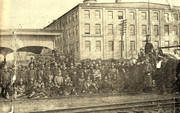
Chief - John Howe, Battalion 8

FDNY Surgeon - Dr Harry M. Archer
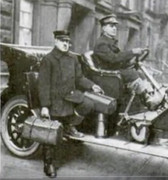
LODD - Engineer of Steamer Mark Kelly, Engine 16, contracted pneumonia and died - RIP.
"Great Baltimore Fire"
It was at 1:40 A.M. on Feb. 8, 1904, when the telephone next to Howe?s bed rang. The call was from the acting chief of department, Charles Kruger.
?Is that you, Howe?? Kruger asked.
?Yes,? Howe replied.
?Howe, you are ordered to proceed at once with the companies and apparatus that I designate to Baltimore.?
?What?s that? Baltimore? Where?? Howe rubbed the sleep from his eyes.
?Listen to me,? Kruger continued. ?There is a big fire raging in Baltimore and the mayor of that city has appealed to Mayor McClellan for help from our department??
With that, Howe was dressed and out the door heading toward a special ferry boat waiting at Liberty Street that would carry the companies to New Jersey, where a special train waited to take them directly to Baltimore. Nine flat cars carried seven gleaming steam fire engines, several hose tenders and a hook-and-ladder truck, all lashed down securely. Two cars were filled with 35 horses. Two coaches were for Howe and his 85 men and 10 New York City newspaper reporters. Several other companies followed later on another train.
The following telegram was sent to the mayor of Baltimore:
Robert M. McLane, Mayor, Baltimore, Md.
Nine fire engines and one hook and ladder company shipped to you on 6:34 o?clock train this morning in charge of battalion chief. The city of New York extends heartfelt sympathy and puts itself at your service. I shall be grateful if you call on me for any assistance New York can lend.
George B. McClellan, Mayor
After some delays, the expeditionary force of New York firemen reached Baltimore. With the winds blowing hard from the northwest, they were sent to the southeast fringe of the fire line to try to stop the fire from spreading to a neighborhood of tenements, lumber yards, factories and icehouses.
Their position was on West Falls Avenue alongside Jones Falls and Dock Street. They moved the seven six-ton engines into position and fired the pumps to their full 1,200-gpm capacity. Numerous lines were stretched and the New Yorkers made a stand. With wind-driven smoke and heat pounding their position, they held their ground and drove back some of the fire. Working in conjunction with the Baltimore fireboat Cataract, the FDNY firemen held their position through the night. With little visibility, they worked continually, taking breaks company by company only to have a sandwich and a cup of warming coffee before returning to the lines.
Howe led members of Engines 5 and 27 in a dangerous attempt to keep the spreading flames from igniting a huge malt warehouse. With the help of reinforcements the line held and the flames were stopped. For hours, they flowed water across the smoldering ruins, helping to ensure the fire was extinguished. Finally, dirty, cold and exhausted, the New Yorkers were ready to go home. The fire was out ? their duty was done.
After meeting with Baltimore City Chief August Emrich and accepting his personal thanks and praise, Howe told him, ?This is the worst fire I have ever seen. There seemed to be no stopping it when we got here. It was in so many places at once. I don?t believe our men have ever had a harder fight.? Regarding the Baltimore firemen, he told reporters, ?The men themselves in this city are plucky fighters and good firemen. The way they have stuck to this fight against awful odds proves that.?
Howe and the New York City firemen had won the admiration and respect of not only the citizens and politicians, but also the Baltimore firefighters and the other cities that responded and operated in Baltimore including Philadelphia, Annapolis, Chester, York and Washington, DC.
The exhausted New Yorkers, who had been awake and operating for more than 48 hours, finally boarded a train for the trip home. Sadly, one FDNY member, Engineer of Steamer Mark Kelly of Engine 16, contracted pneumonia and later died. Howe also became very ill after the Baltimore fire, but refused to go sick. He was finally taken to the hospital on July 10, 1904, suffering from acute inflammatory rheumatism. One notable visitor to the chief was William Aiken, who had been rescued from a fire by Howe three years earlier. After a brief stay, Howe?s condition improved and he returned to work.
- from "Firehouse" http://www.firehouse.com/article/11213191/rekindles-hall-of-flame
"Longest Run on Record" - WNYF 4th Issue 1966
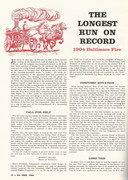
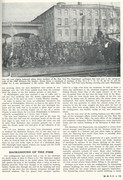
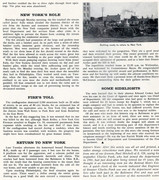
Notes:
- most responding companies were double FDNY companies
- responding members did not know they were going to Baltimore (had no money or winter clothing)
- no provisions were made for feeding members
- Dr Archer paid for meal for all 85 members
https://www.youtube.com/watch?v=9_a8KgzWpYg
https://www.youtube.com/watch?v=nCxUG65HGsc
FDNY Companies - Engines 5, 7, 12, 13, 16, 26, 27, 31, 33 H&L 5 - 85 members

Chief - John Howe, Battalion 8

FDNY Surgeon - Dr Harry M. Archer

LODD - Engineer of Steamer Mark Kelly, Engine 16, contracted pneumonia and died - RIP.
"Great Baltimore Fire"
It was at 1:40 A.M. on Feb. 8, 1904, when the telephone next to Howe?s bed rang. The call was from the acting chief of department, Charles Kruger.
?Is that you, Howe?? Kruger asked.
?Yes,? Howe replied.
?Howe, you are ordered to proceed at once with the companies and apparatus that I designate to Baltimore.?
?What?s that? Baltimore? Where?? Howe rubbed the sleep from his eyes.
?Listen to me,? Kruger continued. ?There is a big fire raging in Baltimore and the mayor of that city has appealed to Mayor McClellan for help from our department??
With that, Howe was dressed and out the door heading toward a special ferry boat waiting at Liberty Street that would carry the companies to New Jersey, where a special train waited to take them directly to Baltimore. Nine flat cars carried seven gleaming steam fire engines, several hose tenders and a hook-and-ladder truck, all lashed down securely. Two cars were filled with 35 horses. Two coaches were for Howe and his 85 men and 10 New York City newspaper reporters. Several other companies followed later on another train.
The following telegram was sent to the mayor of Baltimore:
Robert M. McLane, Mayor, Baltimore, Md.
Nine fire engines and one hook and ladder company shipped to you on 6:34 o?clock train this morning in charge of battalion chief. The city of New York extends heartfelt sympathy and puts itself at your service. I shall be grateful if you call on me for any assistance New York can lend.
George B. McClellan, Mayor
After some delays, the expeditionary force of New York firemen reached Baltimore. With the winds blowing hard from the northwest, they were sent to the southeast fringe of the fire line to try to stop the fire from spreading to a neighborhood of tenements, lumber yards, factories and icehouses.
Their position was on West Falls Avenue alongside Jones Falls and Dock Street. They moved the seven six-ton engines into position and fired the pumps to their full 1,200-gpm capacity. Numerous lines were stretched and the New Yorkers made a stand. With wind-driven smoke and heat pounding their position, they held their ground and drove back some of the fire. Working in conjunction with the Baltimore fireboat Cataract, the FDNY firemen held their position through the night. With little visibility, they worked continually, taking breaks company by company only to have a sandwich and a cup of warming coffee before returning to the lines.
Howe led members of Engines 5 and 27 in a dangerous attempt to keep the spreading flames from igniting a huge malt warehouse. With the help of reinforcements the line held and the flames were stopped. For hours, they flowed water across the smoldering ruins, helping to ensure the fire was extinguished. Finally, dirty, cold and exhausted, the New Yorkers were ready to go home. The fire was out ? their duty was done.
After meeting with Baltimore City Chief August Emrich and accepting his personal thanks and praise, Howe told him, ?This is the worst fire I have ever seen. There seemed to be no stopping it when we got here. It was in so many places at once. I don?t believe our men have ever had a harder fight.? Regarding the Baltimore firemen, he told reporters, ?The men themselves in this city are plucky fighters and good firemen. The way they have stuck to this fight against awful odds proves that.?
Howe and the New York City firemen had won the admiration and respect of not only the citizens and politicians, but also the Baltimore firefighters and the other cities that responded and operated in Baltimore including Philadelphia, Annapolis, Chester, York and Washington, DC.
The exhausted New Yorkers, who had been awake and operating for more than 48 hours, finally boarded a train for the trip home. Sadly, one FDNY member, Engineer of Steamer Mark Kelly of Engine 16, contracted pneumonia and later died. Howe also became very ill after the Baltimore fire, but refused to go sick. He was finally taken to the hospital on July 10, 1904, suffering from acute inflammatory rheumatism. One notable visitor to the chief was William Aiken, who had been rescued from a fire by Howe three years earlier. After a brief stay, Howe?s condition improved and he returned to work.
- from "Firehouse" http://www.firehouse.com/article/11213191/rekindles-hall-of-flame
"Longest Run on Record" - WNYF 4th Issue 1966



Notes:
- most responding companies were double FDNY companies
- responding members did not know they were going to Baltimore (had no money or winter clothing)
- no provisions were made for feeding members
- Dr Archer paid for meal for all 85 members
https://www.youtube.com/watch?v=9_a8KgzWpYg
https://www.youtube.com/watch?v=nCxUG65HGsc
Dr Harry M. Archer, Honorary FDNY Battalion Chief/2nd Deputy Commissioner, 60 years service to FDNY members
https://www.youtube.com/watch?v=_JVUULu96Ao
-1924 awarded James Gordon Bennett Medal - only civilian to ever be awarded this medal
-Harry M Archer medal for heroism awarded in his honor
-Fireboat "Harry M. Archer", Engine 78/Marine 6, named in his honor
Dr. Archer was born to a prominent New York family. He attended Columbia University and received an M.D. degree from Bellevue Medical College in 1894. Since his childhood he loved the FDNY, not unlike many youngsters in the City. But after becoming a physician, Dr. Archer dedicated himself to New York's Bravest. Perhaps to the disappointment of his family, rather than becoming a private physician to New York's high society, he accepted a salaried position with Aetna Life Affiliated Companies with the proviso that he could, and would, leave his office to attend greater alarm fires. On March 7, 1907, Dr. Archer was appointed to the Department with the rank of honorary Battalion Chief and was designated a Medical Officer. Though never receiving compensation for his medical services to the FDNY, there is no doubt that this was his full-time job.
Whether by horse, bicycle, his Locomobile outfitted with bell and Maltese cross, or by "bus" - the 1914 FDNY Ambulance he designed - Dr. Archer's appearance at second and greater alarms was a matter of routine. But once at the scene, he was not satisfied with merely tending to the wounds, major or minor, of the firefighters. On multiple occasions, Dr. Archer entered burning or collapsed buildings to treat firefighters and civilians alike. At the Equitable Building fire in 1912, he made his way into the basement vaults of the building to administer aid to trapped firemen. For this action, he received his first medal of valor. He was cited a total of four times during his career including the Department's highest award, the James Gordon Bennett Medal, for his participation in the rescue of two workmen trapped in a building collapse at 39 to 41 Eldridge Street in Manhattan. Dr. Archer himself became trapped briefly when a second collapse shook the building as he was making his exit. Twenty-four years later, at the age of 78, Dr. Archer was still at it, this time crawling through the rubble and debris to spend over ten hours on a freezing New Year's Eve to try to keep two firefighters, Battalion Chief William Hogan and Fireman Winfield Walsh, alive. They were trapped in the collapse of a loft building at 749 Broadway. Dr. Archer administered plasma to them, perhaps the first time this was done outside of a hospital in other than a combat setting, as well as broth through feeding tubes. Unfortunately, both men succumbed to their injuries but not until several days after their ordeal.
In 1939, Mayor LaGuardia asked him to serve as Second Deputy Commissioner which he did until 1940. To do so, he had to resign his honorary position and rank.
Dr. Archer's activities earned him the respect of his professional colleagues as well as the firefighters he treated. Perhaps the first Fire Surgeon to truly embody that title, he became nationally known for his expertise in treating toxic gas poisoning, having developed ground-breaking treatment modalities. Some times his methods were "low-tech." He was known to stock woolen Navy watch caps in his ambulance that he would make injured men wear on cold, wet nights.
Though the firefighters who benefited from Dr. Archer's intense concern and caring are of a generation long since passed, his memory lives on. In 1947, a medal was endowed in his name. It is awarded every third year to one of the three previous Bennett Medal recipients. In 1956, Commissioner Cavanaugh unveiled a plaque in Headquarters honoring Dr. Archer's sixty years of devotion and service to the members of the Department. In 1958, a fireboat was commissioned in his name. It was retired in 1994.
Dr. Archer was given a full Departmental funeral at St. Patrick's Cathedral. He is buried in the family crypt at Sleepy Hollow Cemetery in Tarrytown, New York.
- https://www.findagrave.com/memorial/86601573/harry-mortimer-archer
Fireboat "Harry M. Archer", Engine 78/Marine Company 6

https://www.youtube.com/watch?v=_JVUULu96Ao
-1924 awarded James Gordon Bennett Medal - only civilian to ever be awarded this medal
-Harry M Archer medal for heroism awarded in his honor
-Fireboat "Harry M. Archer", Engine 78/Marine 6, named in his honor
Dr. Archer was born to a prominent New York family. He attended Columbia University and received an M.D. degree from Bellevue Medical College in 1894. Since his childhood he loved the FDNY, not unlike many youngsters in the City. But after becoming a physician, Dr. Archer dedicated himself to New York's Bravest. Perhaps to the disappointment of his family, rather than becoming a private physician to New York's high society, he accepted a salaried position with Aetna Life Affiliated Companies with the proviso that he could, and would, leave his office to attend greater alarm fires. On March 7, 1907, Dr. Archer was appointed to the Department with the rank of honorary Battalion Chief and was designated a Medical Officer. Though never receiving compensation for his medical services to the FDNY, there is no doubt that this was his full-time job.
Whether by horse, bicycle, his Locomobile outfitted with bell and Maltese cross, or by "bus" - the 1914 FDNY Ambulance he designed - Dr. Archer's appearance at second and greater alarms was a matter of routine. But once at the scene, he was not satisfied with merely tending to the wounds, major or minor, of the firefighters. On multiple occasions, Dr. Archer entered burning or collapsed buildings to treat firefighters and civilians alike. At the Equitable Building fire in 1912, he made his way into the basement vaults of the building to administer aid to trapped firemen. For this action, he received his first medal of valor. He was cited a total of four times during his career including the Department's highest award, the James Gordon Bennett Medal, for his participation in the rescue of two workmen trapped in a building collapse at 39 to 41 Eldridge Street in Manhattan. Dr. Archer himself became trapped briefly when a second collapse shook the building as he was making his exit. Twenty-four years later, at the age of 78, Dr. Archer was still at it, this time crawling through the rubble and debris to spend over ten hours on a freezing New Year's Eve to try to keep two firefighters, Battalion Chief William Hogan and Fireman Winfield Walsh, alive. They were trapped in the collapse of a loft building at 749 Broadway. Dr. Archer administered plasma to them, perhaps the first time this was done outside of a hospital in other than a combat setting, as well as broth through feeding tubes. Unfortunately, both men succumbed to their injuries but not until several days after their ordeal.
In 1939, Mayor LaGuardia asked him to serve as Second Deputy Commissioner which he did until 1940. To do so, he had to resign his honorary position and rank.
Dr. Archer's activities earned him the respect of his professional colleagues as well as the firefighters he treated. Perhaps the first Fire Surgeon to truly embody that title, he became nationally known for his expertise in treating toxic gas poisoning, having developed ground-breaking treatment modalities. Some times his methods were "low-tech." He was known to stock woolen Navy watch caps in his ambulance that he would make injured men wear on cold, wet nights.
Though the firefighters who benefited from Dr. Archer's intense concern and caring are of a generation long since passed, his memory lives on. In 1947, a medal was endowed in his name. It is awarded every third year to one of the three previous Bennett Medal recipients. In 1956, Commissioner Cavanaugh unveiled a plaque in Headquarters honoring Dr. Archer's sixty years of devotion and service to the members of the Department. In 1958, a fireboat was commissioned in his name. It was retired in 1994.
Dr. Archer was given a full Departmental funeral at St. Patrick's Cathedral. He is buried in the family crypt at Sleepy Hollow Cemetery in Tarrytown, New York.
- https://www.findagrave.com/memorial/86601573/harry-mortimer-archer
Fireboat "Harry M. Archer", Engine 78/Marine Company 6

- Joined
- Mar 8, 2007
- Messages
- 5,392
Except for Eng. 7 (located at 49 Beekman), every company that responded including H&L 5 was a double company that day so there was no need for relocators to cover them during their long run.mack said:FDNY Responds to Great Baltimore Fire - February 1904
FDNY Companies - Engines 5, 7, 12, 13, 16, 26, 27, 31, 33 H&L 5 - 85 members
Chief - John Howe, Battalion 8
FDNY Surgeon - Dr Harry M. Archer
LODD - Engineer of Steamer Mark Kelly, Engine 16, contracted pneumonia and died - RIP.
"Great Baltimore Fire"
It was at 1:40 A.M. on Feb. 8, 1904, when the telephone next to Howe?s bed rang. The call was from the acting chief of department, Charles Kruger.
?Is that you, Howe?? Kruger asked.
?Yes,? Howe replied.
?Howe, you are ordered to proceed at once with the companies and apparatus that I designate to Baltimore.?
?What?s that? Baltimore? Where?? Howe rubbed the sleep from his eyes.
?Listen to me,? Kruger continued. ?There is a big fire raging in Baltimore and the mayor of that city has appealed to Mayor McClellan for help from our department??
With that, Howe was dressed and out the door heading toward a special ferry boat waiting at Liberty Street that would carry the companies to New Jersey, where a special train waited to take them directly to Baltimore. Nine flat cars carried seven gleaming steam fire engines, several hose tenders and a hook-and-ladder truck, all lashed down securely. Two cars were filled with 35 horses. Two coaches were for Howe and his 85 men and 10 New York City newspaper reporters. Several other companies followed later on another train.
The following telegram was sent to the mayor of Baltimore:
Robert M. McLane, Mayor, Baltimore, Md.
Nine fire engines and one hook and ladder company shipped to you on 6:34 o?clock train this morning in charge of battalion chief. The city of New York extends heartfelt sympathy and puts itself at your service. I shall be grateful if you call on me for any assistance New York can lend.
George B. McClellan, Mayor
After some delays, the expeditionary force of New York firemen reached Baltimore. With the winds blowing hard from the northwest, they were sent to the southeast fringe of the fire line to try to stop the fire from spreading to a neighborhood of tenements, lumber yards, factories and icehouses.
Their position was on West Falls Avenue alongside Jones Falls and Dock Street. They moved the seven six-ton engines into position and fired the pumps to their full 1,200-gpm capacity. Numerous lines were stretched and the New Yorkers made a stand. With wind-driven smoke and heat pounding their position, they held their ground and drove back some of the fire. Working in conjunction with the Baltimore fireboat Cataract, the FDNY firemen held their position through the night. With little visibility, they worked continually, taking breaks company by company only to have a sandwich and a cup of warming coffee before returning to the lines.
Howe led members of Engines 5 and 27 in a dangerous attempt to keep the spreading flames from igniting a huge malt warehouse. With the help of reinforcements the line held and the flames were stopped. For hours, they flowed water across the smoldering ruins, helping to ensure the fire was extinguished. Finally, dirty, cold and exhausted, the New Yorkers were ready to go home. The fire was out ? their duty was done.
After meeting with Baltimore City Chief August Emrich and accepting his personal thanks and praise, Howe told him, ?This is the worst fire I have ever seen. There seemed to be no stopping it when we got here. It was in so many places at once. I don?t believe our men have ever had a harder fight.? Regarding the Baltimore firemen, he told reporters, ?The men themselves in this city are plucky fighters and good firemen. The way they have stuck to this fight against awful odds proves that.?
Howe and the New York City firemen had won the admiration and respect of not only the citizens and politicians, but also the Baltimore firefighters and the other cities that responded and operated in Baltimore including Philadelphia, Annapolis, Chester, York and Washington, DC.
The exhausted New Yorkers, who had been awake and operating for more than 48 hours, finally boarded a train for the trip home. Sadly, one FDNY member, Engineer of Steamer Mark Kelly of Engine 16, contracted pneumonia and later died. Howe also became very ill after the Baltimore fire, but refused to go sick. He was finally taken to the hospital on July 10, 1904, suffering from acute inflammatory rheumatism. One notable visitor to the chief was William Aiken, who had been rescued from a fire by Howe three years earlier. After a brief stay, Howe?s condition improved and he returned to work.
- from "Firehouse" http://www.firehouse.com/article/11213191/rekindles-hall-of-flame
"Longest Run on Record" - WNYF 4th Issue 1966
Notes:
- most responding companies were double FDNY companies
- responding members did not know they were going to Baltimore (had no money or winter clothing)
- no provisions were made for feeding members
- Dr Archer paid for meal for all 85 members
https://www.youtube.com/watch?v=9_a8KgzWpYg
https://www.youtube.com/watch?v=nCxUG65HGsc
- Joined
- Mar 8, 2007
- Messages
- 5,392
From the Book: "FDNY Tales" http://www.fire-police-ems.com/misc/fdny-tales-stories-assign2.shtmlmanhattan said:How far back in history does the concept of "relocators" go?
- Joined
- Aug 29, 2008
- Messages
- 2,487
Very interesting and thanks for posting Gman.
guitarman314 said:From the Book: "FDNY Tales" http://www.fire-police-ems.com/misc/fdny-tales-stories-assign2.shtmlmanhattan said:How far back in history does the concept of "relocators" go?
Thanks Gman. The 1909 assignment card shows a lot of changes:
- Disbanded Engines 13, 30, 20, 31, 27, 17, 29, 12, 25, 32, 11, 19
- Disbanded Water Tower 1
- Relocation - Engine 72 to the Bronx
- Transition - Engine 18 to Squad 18
- Disbanded Division 2
- Disbanded Battalion 3, 5
Different operations:
- No rescue companies, squads, special units - except water towers
- Number of chiefs - only 1 Deputy and 5 BCs at 5th alarm (at a time they did not have radios)
- Few relocations - due to 2-section companies
- No relocations from other boros
- 5 fuel wagons required
- Horses
FDNY would be able to handle a 5th alarm in lower Manhattan with only 5 engines and 1 truck relocated. For Box 220, 13 of the assigned engines and 3 of the assigned trucks were double companies.
Engine 13 - 1st due Box 220 - former firehouse 99 Wooster Street:
http://daytoninmanhattan.blogspot.com/2016/01/engine-company-no-13-no-99-wooster.html
Engine 31/Water Tower 1 - former firehouse 87 Lafayette Street:
http://daytoninmanhattan.blogspot.com/2010/05/napoleon-le-bruns-fantastic-french.html
Engine 27 - former firehouse 173 Franklin Street:
http://daytoninmanhattan.blogspot.com/2016/09/engine-company-27-no-173-franklin-street.html

